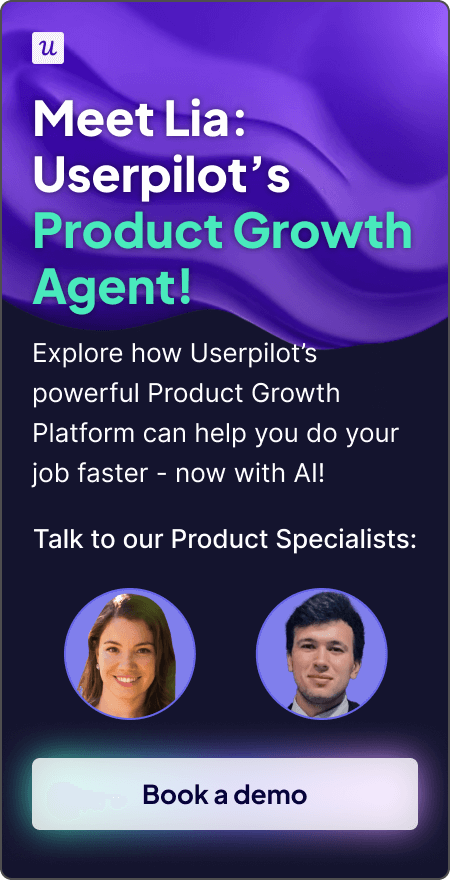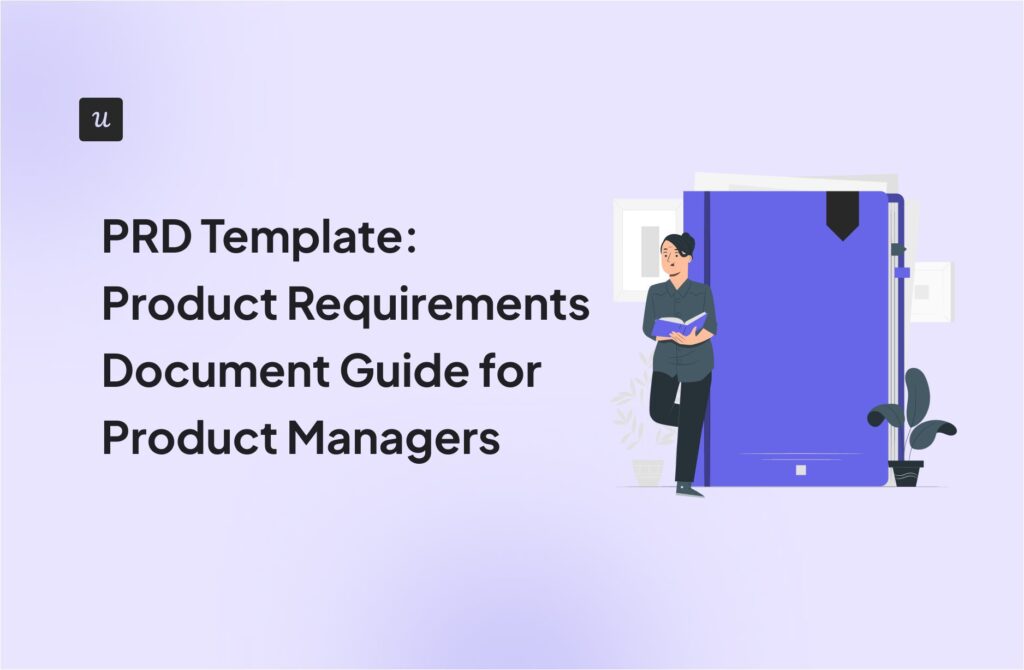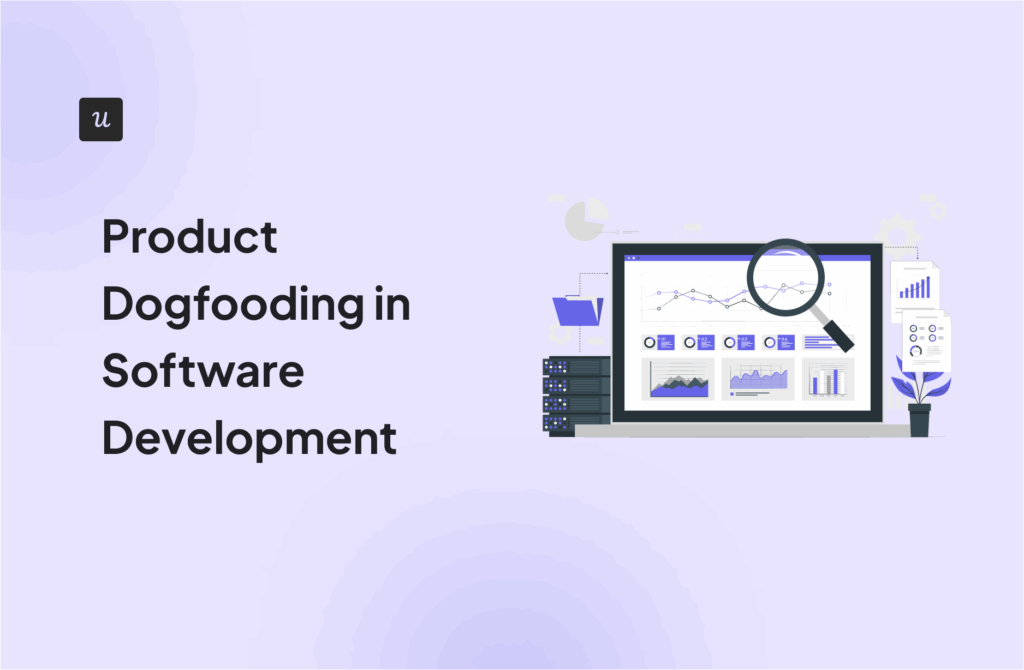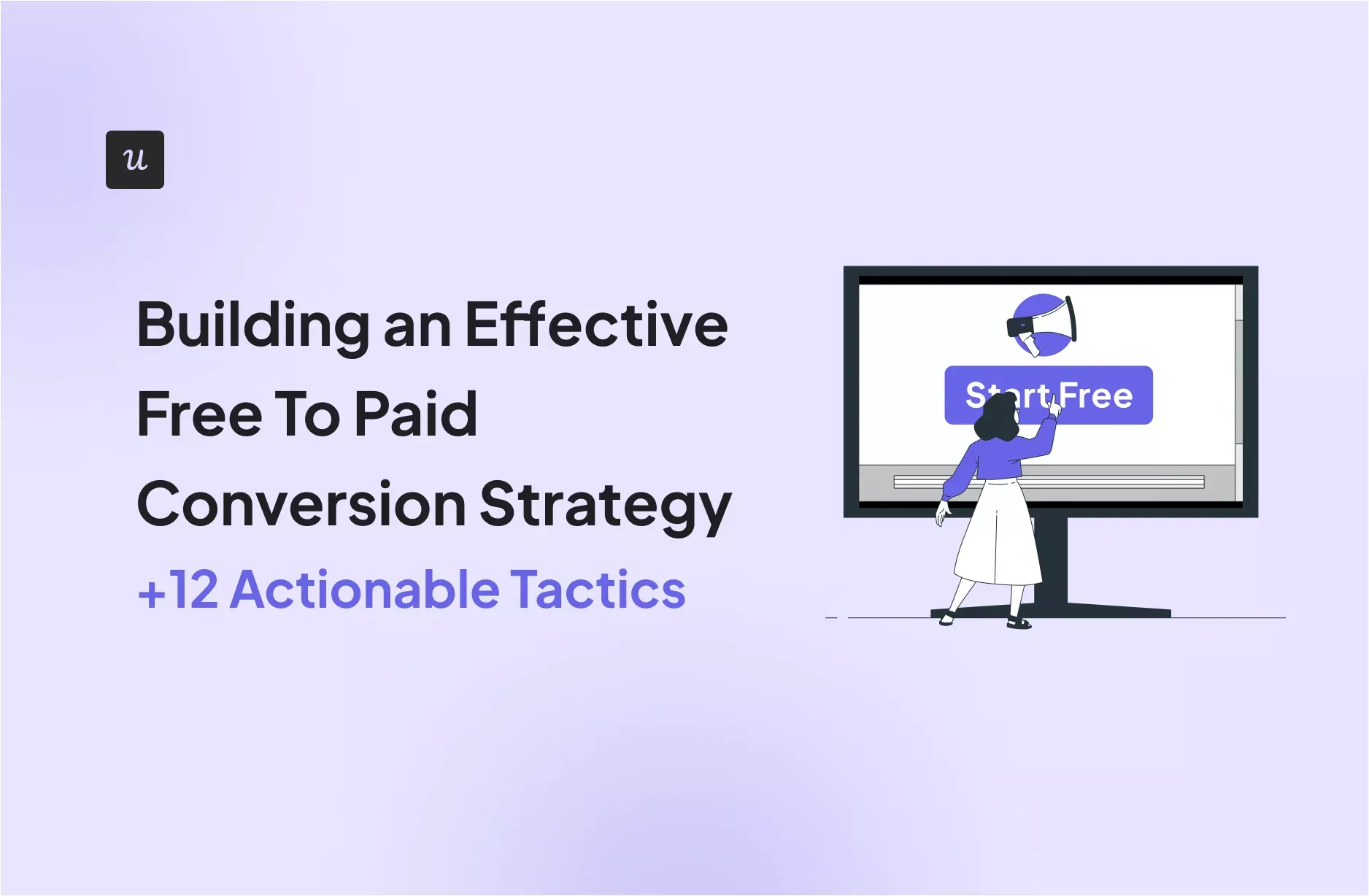
Building an Effective Free-To-Paid Conversion Strategy (+12 Actionable Tactics)
What’s the best free-to-paid conversion strategy to attract more users organically and reduce customer churn?
Well, this isn’t a question with a single answer. Rather, it depends on your SaaS model, the stage of your business, and the nature of your product.
So in this post, we’ll go over 12 actionable tactics you can apply in product management and, together, create the best conversion strategy for your company.
Try Userpilot Now
See Why 1,000+ Teams Choose Userpilot
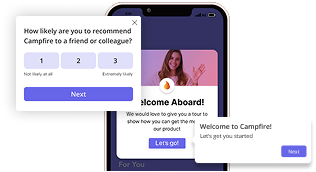
12 Tactics to convert free trial users into paying customers
Let’s go over 12 actionable tactics proven to boost free-to-paid conversions in SaaS companies, including:
- Experiment with different trial lengths.
- Onboard users with a personalized flow.
- Design personalized experiences for each user persona.
- Create valuable experiences from the start.
- Identify and leverage top features in free trials.
- Drive users toward key activation points with a checklist.
- Identify and remove friction in the user journey.
- Accommodate free users’ different learning styles.
- Collect feedback and improve your conversion strategy.
- Create engagement loops to keep users hooked.
- Encourage users to upgrade at the right time.
- Use promotions to create a sense of urgency.
1. Experiment with different trial lengths
How long should a free trial period last to maximize the trial conversion rate? Recurly research study showed that free trials of 7 days or less had the highest conversion rates at 40.4%, whereas trials longer than 61 days saw a decrease to 30.6%.
But rather than a rule, this stat mostly suggests that achieving activation earlier increases the chances of conversion. So, instead of reducing the free trial length to 7 days, it’s best to give it just enough time for new customers to perceive the core value of your product.
To do this, you need to answer:
- What’s the average time it takes to build a habit around the core use case of your product?
- How soon do they experience the Aha! moment and reach the activation stage?
- What key actions must they complete at the onboarding stage?
Keep in mind that if the trial is too short, your users may not have a chance to reach the Aha! moment. If the trial is too long, then you delay the buying process when the customer is no longer excited about the product.
Experiment with a trial length that makes sense based on these questions and then analyze the results to find a sweet spot.
2. Onboard users with a personalized onboarding flow
Now, how do you help users unlock the value of your product faster?
The first step is to personalize the onboarding process. Users have different goals, jobs-to-be-done, and workflows, so instead of walking every user through the same old tour, it’s best to guide them toward the specific outcomes they care about.
This won’t only reduce your time-to-value, but also increase the chances of a free-to-paid conversion.
To get started, here’s one simple way to do it inside your app:
- Use welcome modals or microsurveys to collect basic user data up front (e.g., role, goal, team size).
- Segment users based on their responses.
- Map different onboarding paths for different use cases.
- Trigger contextual tooltips, checklists, or onboarding flows based on user segments.
With native mobile SDK, you can create targeted onboarding flows using slideouts, carousels, and push notifications.
For example, Smoobu, a vacation rental management tool, used Userpilot to build a dynamic onboarding flow based on user inputs during sign-up. They figured through analytics that connecting their booking channel was the action that correlated with long-term retention. Thus, they designed and triggered interactive walkthroughs encouraging potential customers to complete this step earlier.
With
I’d definitely recommend Userpilot. It allows us the flexibility to move fast, experiment, and really understand what users need. It’s helped us speed up processes and create a smoother user experience.
– Dasha Frantz, Product Designer at Smoobu
3. Design a personalized experience for each user persona
Your customers come to you because they have a problem that your product can solve.
But as I mentioned, your customers use certain features in your product to fit their unique problems, JTBDs, and goals. And with personalization, you can ensure that each individual user experiences enough value to justify paying for your software.
However, to reach this level of personalization, it’s not enough to follow the process I laid out earlier. You must also design a whole different experience for each of your customer personas.
Here’s how to do it:
- Collect essential customer data such as job titles, pain points, responsibilities, location, objectives, and JTBDs. You can do this automatically through welcome modals, in-app surveys, and behavioral data, but you should also perform 1-on-1 interviews, usability tests, or moderated focus groups to go deeper.

- Then, analyze the data to create different user personas that you can identify from your research.
- Use a tool like Userpilot to segment your customers based on the characteristics of your user persona or target customer.

- Design and trigger personalized onboarding processes for each user persona so they can experience the most value during their trial period. For instance, you can trigger a specific onboarding checklist with interactive walkthroughs throughout the sales-related features if the user is a sales rep.
4. Create valuable experiences from the beginning of the user journey
It sounds redundant, but if users have to do too much work to get to the Aha! moment, you’ll create a value gap, and they’ll drop off before they ever get there.
Sadly, this is one of the most common reasons free-to-paid conversion rates stay low. And it’s the reason why we encourage you to create high-value experiences as close to the beginning as possible.
Here is a great example of how Stripo, an email design platform, allows you to try a product demo without registering. They offer a “1-click demo” on the pricing page where you can instantly try the product yourself in less than 3 minutes. It includes a series of walkthroughs and checklists implemented with Userpilot.
As a result, 1,500 users out of 31,000 visitors completed the whole tutorial before signing up, meaning these were already activated before even giving their email address.
5. Identify and leverage your top features in your free trials
Before designing your free trial strategy, you need to figure out what features to include.
Analyze your existing product usage data to see which features paying customers love most. Alternatively, you can also filter the data to see which ones are used mainly by your power users.
Then, offer these features in your free trial products without giving them away for free. You can either add feature limits, give access only for a limited period, or add a watermark to convert trial users.
6. Drive users toward key activation points with a checklist
In addition to selecting the right features for your trials, you must also determine the 3-5 actions that are critical to achieve activation and get users to complete them ASAP.
For this, I highly recommend adding an onboarding checklist to prompt users to take those actions. These checklists tap into a psychological effect called “endowed progress,” which is the idea that people are more motivated to pursue something if they see themselves progressing to the end.
Here are a few tips to consider:
- Use behavioral data to define your most valuable activation steps.
- Keep the checklist short, 3 to 5 tasks max.
- Show progress visually. Think of checkmarks, progress bars, and eye-catching icons.
- Remember to trigger a personalized checklist for each user persona.
An example of this is how Sked Social used Userpilot to implement an onboarding checklist that focused on scheduling your first post. It shows up automatically when a new user signs up, leads them to the relevant page when they click on each task, and triggers a slideout to guide users throughout each step.
As a result, Sked Social tripled its conversions.
7. Identify and remove any unnecessary friction in the user journey
Too much friction is one of the most common killers of free-to-paid conversion. Sometimes it’s obvious (e.g., a broken signup flow), but it can also happen because of too many steps to get started, confusing copy, slow-loading features, or awkward UI that delays users from reaching value.
The challenging part is that what feels intuitive to your team might feel frustrating to a new user. So you need tools to spot places where users are objectively getting stuck, including:
- Session replays. To watch actual user sessions to see where they pause, backtrack, or bounce.
- User feedback widgets. For asking simple, in-context questions like “how easy is it to use the invoicing feature?”
- Product analytics. To look for drop-offs in funnels or unusually high exit rates on specific steps.
Beable, for instance, uses Userpilot funnel analysis and survey analytics to uncover friction in their platform. These tools help them identify drop-off points in the user journeys, ask users about their design preferences and, as a result, guide their product development roadmap.
We are using surveys now to ask users about possible re-designs of pages. We started a survey on March 26 and to date (April 4, 2024), it’s been shown to 852 users and 41 users have completed it. This is informing our product development roadmap and process (Option A is the current page).
– Ann Marie McNamara, Senior Product Manager at Beable
8. Accommodate to free users’ different learning styles
Another tricky aspect about users is that they not only have different needs and goals, but they also have different preferences for consuming information and learning.
This means you can’t just force your users through a single path to activation. You also have to give them the freedom to learn through videos, exploration, or linear walkthroughs.
Think of adding each of these options:
- Skippable onboarding flows to respect experienced users who just want to dive in.
- Tooltips and in-app walkthroughs to help guide learners who want to be supported as they explore.
- Self-serve knowledge bases to give independent users the power to learn on their own time.
- Video tutorials and product demos to support visual and auditory learners who want to watch before they do.
- Documentation and how-to articles to offer depth for technical users who want to understand the “why” behind the “how.”
9. Collect feedback and improve your free-to-paid conversion strategy
A successful free-to-paid strategy is not a once-and-done deal, it requires continuous optimization. As you test different approaches and tactics, you also need to monitor user behavior and conversion metrics closely.
After customers complete their trial period, you can send a transactional NPS survey to ask their opinion on your product. Then, you can follow it up with an open-ended qualitative question to understand the logic behind the score.
With these insights, you’ll be able to fine-tune your free-to-paid strategy and improve your conversion rate.
10. Create engagement loops to keep users hooked
An engagement loop is an experience that motivates users to engage with your product through stimulating product interactions. It uses a variety of engaging features to add personality and flair to a product.
Mailchimp is an example of an app maximizing engagement loops. They use an animated high-five to congratulate subscribers when they schedule a campaign, which makes the experience more enjoyable for the user.

11. Encourage users to upgrade at the right time
A best practice to encourage upgrades is to prompt users to convert at regular intervals before their free period ends.
But be careful, if you ask too early before you deliver any value, you’ll come across as pushy and lose the customer.
You must ensure every attempt to upsell is contextual, meaning you only sell an upgrade at the right time when users have already experienced value. This could involve triggering an email or an in-app prompt after the user has achieved the activation milestone.
And if they don’t convert, you should also notify users when the same period is coming to an end. Here’s what I’d recommend you do:
- Remind users about the benefits of your product and what they stand to lose if they don’t upgrade to the paid version.
- Send a reminder at least 24 hours before the free account ends.
- Collect feedback on why the user has not upgraded yet to offer them personalized alternatives, like a different plan or exclusive discounts.
A good example is this upgrade modal from Loom. They know that users will likely exceed the 5-minute cap of their free plan, so they trigger a modal to sell the user an upgrade to their paid subscription.

12. Use promotions to create a sense of urgency
Using FOMO triggers is a great way to encourage trial customers to act quickly.
To encourage it, make freemium users an offer they can’t refuse. For example, offer a 25% discount if they upgrade their freemium version before their trial ends. You can also add a time limit to the offer to instill a sense of urgency to try out the paid plan “before the offer expires.”
Now, it’s best practice to send promotions when the user is in-app, so remember to also include a UI modal as a subtle reminder without disrupting the user’s experience.
We went with Userpilot because the list of features was quite wide. We also found the UI very intuitive and easy to use.
– Dasha Frantz, Product Designer at Smoobu
FAQ
What is a free trial conversion rate?
The free trial conversion rate is the percentage of users who upgrade to a paid account at the end of their free trial period. It reflects how well your product demonstrates its value during the trial period.
Here’s the formula to calculate it:
Free Trial Conversion Rate (%) = (Number of Trial-to-Paid Users / Total Number of Trial Users) × 100
For example, if 500 users sign up for a free trial and 100 of them convert to paying customers, then your free-to-paid conversion is 20%.
What is a good free-to-paid conversion rate?
There is no general benchmark for defining a good free trial conversion rate for SaaS products. It varies depending on the industry, product, and trial model.
However, there are specific conversion benchmarks for different industries and free trial models that you can look into. So if we look at it by model, here’s how the numbers look:
- Opt-in free trials to paid: 18.2%
- Opt-out free trial to paid: 48.8%
- Freemium to Paid: 2.6%
As you can see, these are wildly different numbers due to how each model influences the decision to sign up for a free trial and to pay for the premium version.
Whereas, this is how the benchmarks look by industry:
- AdTech: 24.3%
- CRM: 23.4%
- Cybersecurity: 21.9%
- Enterprise: 18.6%
- Fintech: 19.4%
- HR: 22.7%
- MedTech: 21.5%
The impact made by your industry isn’t as impactful as the model you follow, but you should still consider the differences when figuring out your free trial model.
Different types of business models and how they can impact conversion rates
Offering freemium and free trials is an excellent way for your product to sell itself. But what free trial model should you use?
First, let’s understand SaaS free trials and how to leverage each one without tanking your conversion rate:
- Freemium plan. Offers perpetual access to a free version of the product, with upgrades for advanced features. According to the benchmark, conversion rate is about 2.6%, which means it’s best for high-volume tools or viral growth strategies where user scale is key.
- Free trial. Provides time-limited access to premium features. It can be opt-in (no credit card details) or opt-out (payment information required), which means their conversion benchmarks vary wildly between 18.2% (opt-in) and 48.8% (opt-out) due to the difference in commitment.
- Reverse trial. Gives full feature access upfront, then downgrades to basic features if users don’t convert. It tends to convert more than the standalone freemium model because it lets users experience the value of the paid features, build a habit around it, and feel the urgency to upgrade to avoid losing a valuable tool.


















